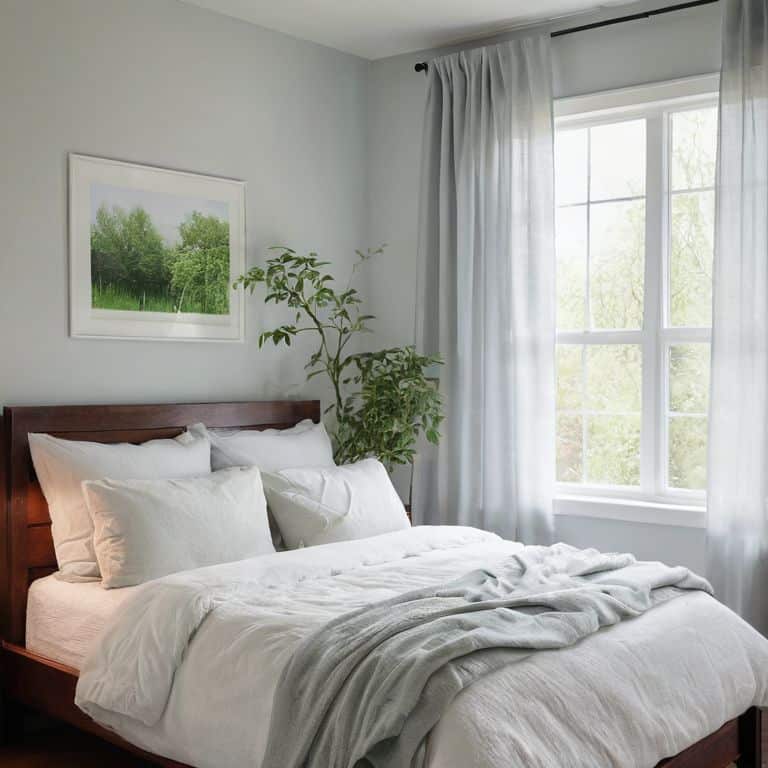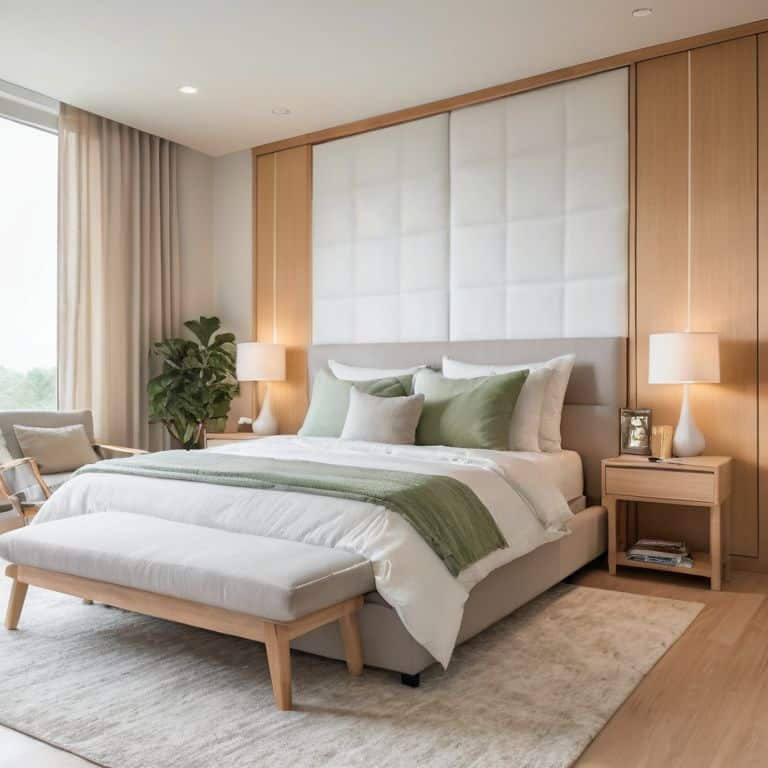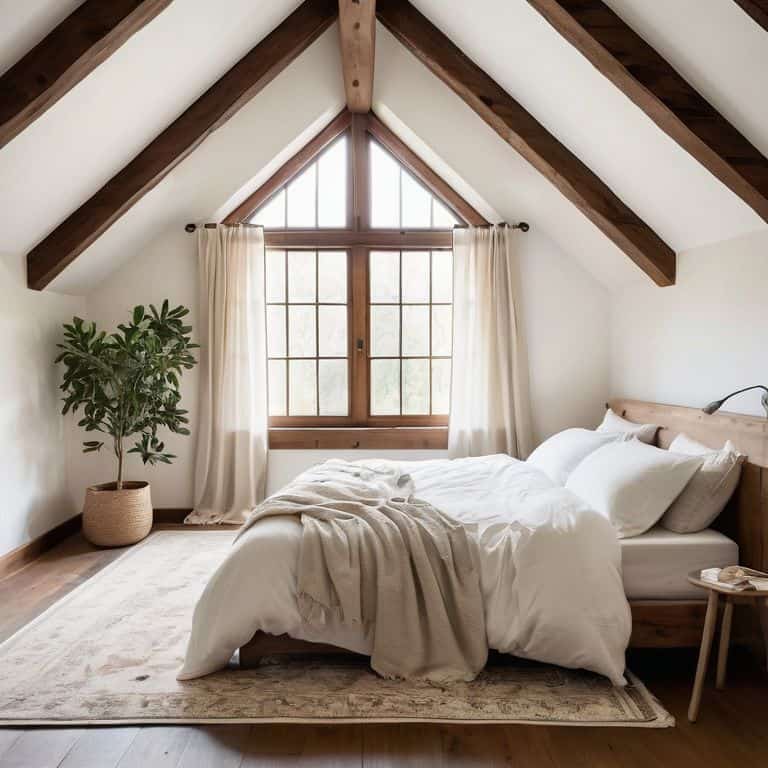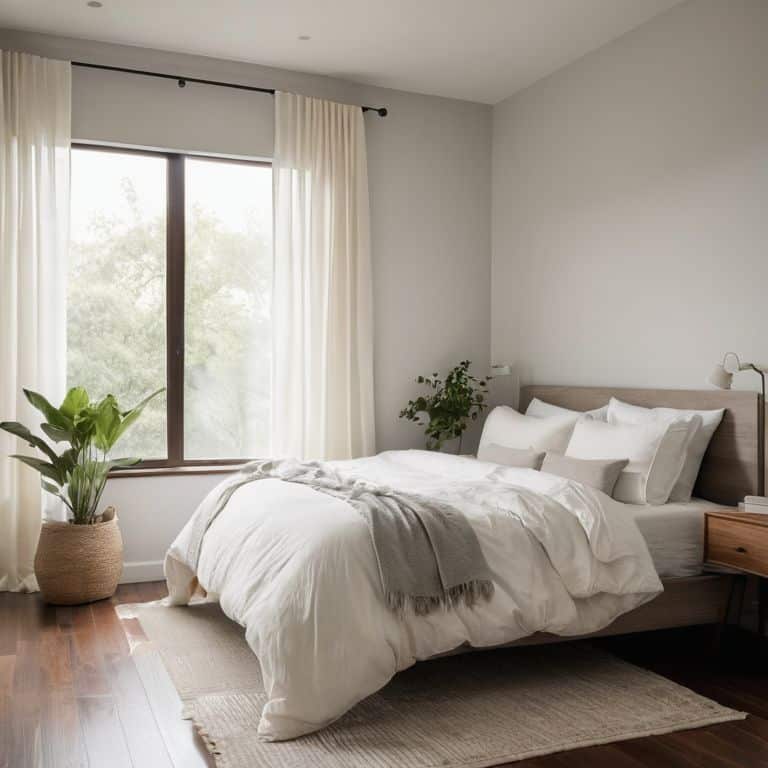I still remember the night I realized that my bedroom was not the sanctuary I thought it was. The sound of cars driving by outside, the creaks and groans of our old house, and even the occasional noise from our neighbors made it impossible for me to get a good night’s sleep. I began to research how to reduce noise in your bedroom, and what I found was surprising – most of the solutions were either expensive or required major renovations. But I was determined to find a way to create a peaceful retreat, and that’s exactly what I’ll be sharing with you in this article.
As we explore the world of noise reduction, I want to assure you that this isn’t just about soundproofing your bedroom; it’s about creating a space that calms your mind and rejuvenates your body. In this guide, I’ll walk you through practical, easy-to-implement tips on how to reduce noise in your bedroom, from simple DIY solutions to clever furniture arrangements. My goal is to help you transform your bedroom into a haven of silence, where you can escape the chaos of everyday life and find the restful sleep you deserve.
Table of Contents
Guide Overview: What You'll Need

Total Time: 1 hour 45 minutes
Estimated Cost: $50 – $100
Difficulty Level: Intermediate
Tools Required
- Acoustic Caulk Gun (for sealing gaps)
- Drill (with screwdriver bits)
- Measuring Tape (for measuring windows and doors)
- Utility Knife (with extra blades)
Supplies & Materials
- Acoustic Sealant (for gaps and cracks)
- Mass Loaded Vinyl (for soundproofing walls)
- Acoustic Panels (for reducing echo)
- Weatherstripping (for doors and windows)
- 2-in x 4-in lumber (for framing acoustic panels)
Step-by-Step Instructions
- 1. First, let’s assess the noise level in your bedroom by taking a few minutes to sit quietly and listen to the sounds around you. Notice the sources of noise, whether it’s traffic outside, a snoring partner, or a ticking clock. This awareness will help you identify the areas that need the most attention. As you do this, pay attention to how these noises make you feel, and imagine how different your space would be if it were truly peaceful.
- 2. Next, consider the role of sound-absorbing materials in reducing noise. Adding items like thick curtains, rugs, and upholstered furniture can help minimize echo and absorb external sounds. For example, hanging heavy drapes or installing acoustic panels can make a significant difference in the overall noise level of your bedroom. Remember, the goal is to create a space that feels like a serene retreat.
- 3. Now, let’s talk about noise-making appliances. If you have a TV, computer, or radio in your bedroom, consider removing them or keeping them on mute when not in use. These devices can be significant sources of noise pollution, and their absence can greatly contribute to a more peaceful environment. Instead, try listening to calming music or nature sounds to create a soothing atmosphere.
- 4. To further reduce external noise, seal any gaps around your windows and doors. Use weatherstripping or caulk to fill in any cracks, and consider installing door sweeps or thresholds to prevent sound from entering or escaping. This simple step can make a big difference in keeping your bedroom quiet and cozy.
- 5. Another crucial step is to create a bedtime routine that promotes relaxation and reduces noise. This could include activities like reading, meditation, or deep breathing exercises. By winding down before bed, you’ll be better equipped to handle any remaining noise and drift off to sleep more easily.
- 6. If you live with others, communicate your needs and work together to establish a quiet time in the evening. This might mean asking family members to keep their voices down or wear headphones when watching TV. By setting clear expectations, you can create a more harmonious living environment that supports everyone’s need for rest.
- 7. Finally, consider investing in earplugs or white noise machines if you’re still struggling with noise. These tools can be especially helpful if you’re a light sleeper or live in a noisy area. By taking this extra step, you can ensure that your bedroom remains a peaceful sanctuary, even in the midst of chaos.
Sanctuary of Silence

As we work towards creating a serene atmosphere in our bedrooms, it’s essential to consider the role of bedroom soundproofing materials. These can range from acoustic panels to mass-loaded vinyl, each serving to absorb or block out unwanted noise. By incorporating these materials into our design, we can significantly reduce outside noise pollution and create a peaceful retreat.
In addition to soundproofing, effective white noise machines can be a valuable tool in maintaining a quiet environment. These machines can help mask any remaining noise, creating a constant, soothing sound that promotes relaxation. For those who prefer a more DIY approach, exploring diy earplug alternatives can be a fun and creative way to reduce noise without breaking the bank.
As we strive to create a quiet sanctuary, it’s also important to think about the acoustic panel installation tips that can make a big difference. By strategically placing these panels, we can minimize echo and absorb sound, resulting in a more peaceful space. Whether you’re looking to create a quiet home office or simply a restful bedroom, these tips can help you achieve your goal and enjoy a more serene living space.
Effective White Noise for Peaceful Slumber
To further enhance the serene ambiance of your bedroom sanctuary, consider incorporating effective white noise techniques. This can be as simple as using a fan or a sound machine to create a constant, soothing hum that masks other distracting noises. I’ve found that gentle rain or ocean wave sounds can be particularly calming, helping to quiet the mind and promote peaceful slumber. By introducing a consistent white noise, you can train your brain to associate these sounds with relaxation, making it easier to unwind and fall asleep.
In my experience, the key to successful white noise implementation is to experiment and find the right balance for your personal comfort level. Some people prefer the sound of gentle wind or even crickets, while others might enjoy the sound of a gentle stream. Whatever your preference, the goal is to create a consistent, calming atmosphere that signals to your mind that it’s time to rest.
Quiet Chaos With Bedroom Soundproofing
To truly create a sanctuary of silence, we need to address the physical space itself. Bedroom soundproofing is a powerful tool in our quest for quiet. By sealing gaps and cracks, and using sound-absorbing materials, we can significantly reduce external noise. This isn’t about creating a recording studio, but about crafting a peaceful retreat that nurtures our minds and bodies.
I recommend starting with simple, DIY-friendly soundproofing solutions, such as acoustic panels or mass-loaded vinyl. These can be surprisingly effective in minimizing noise pollution, and can be easily incorporated into your bedroom design. By taking these small steps, you’ll be amazed at how quickly your bedroom can transform into a serene oasis, free from the distractions of the outside world.
5 Serene Solutions to Silence Your Bedroom
- Use thick, heavy curtains or drapes to block out external noise and create a cozy ambiance
- Invest in a white noise machine or a fan to create a constant, soothing sound that drowns out other noises
- Add area rugs and upholstered furniture to absorb sound and reduce echoes in the room
- Consider soundproofing your bedroom with acoustic panels or mass-loaded vinyl to minimize external noise
- Establish a ‘no electronics’ rule in the bedroom to eliminate beeps, buzzes, and other distracting sounds that can disrupt your sleep
Key Takeaways for a Peaceful Retreat
By applying the principles of soundproofing and using effective white noise, you can significantly reduce external noise pollution in your bedroom, creating a sanctuary that nurtures both body and mind.
Implementing a consistent sleep schedule, optimizing your bedroom’s layout, and incorporating calming elements such as plants or soothing colors can enhance the serene atmosphere, leading to improved sleep quality and mental clarity.
Remember, the journey to a quieter, more peaceful bedroom is a personal and iterative process; be patient, and don’t hesitate to experiment with different techniques until you find the perfect balance that works for you, transforming your bedroom into a true haven of rest and relaxation.
Creating Serenity
As we silence the noise around us, we also quiet the chaos within; a peaceful bedroom is not just a refuge, it’s a reflection of the serenity we cultivate in our minds.
Nathan Reed
Creating Your Peaceful Retreat

As we’ve explored the world of bedroom noise reduction, it’s clear that creating a sanctuary of silence is within reach. We’ve discussed the importance of quieting chaos through soundproofing and the role of effective white noise in promoting peaceful slumber. By implementing these strategies, you’ll be well on your way to transforming your bedroom into a haven that nurtures both body and mind. Remember, the key to a restful night’s sleep lies not just in the absence of noise, but in the presence of a serene environment that calms your senses.
As you embark on this journey to reduce noise in your bedroom, I encourage you to view it as an opportunity to reclaim your space and redefine what relaxation means to you. By doing so, you’ll not only improve the quality of your sleep, but also cultivate a deeper sense of inner peace that stays with you long after you’ve left the sanctuary of your bedroom. So, take a deep breath, let the calmness envelop you, and let your bedroom become the haven you’ve always desired.
Frequently Asked Questions
What are some common noise pollutants in the bedroom that I might not be aware of?
Let’s take a closer look at some common noise pollutants that might be disrupting your bedroom sanctuary. You might be surprised by the subtle sounds that can affect your sleep, such as humming refrigerators, creaky floors, or even the gentle tick-tock of a clock.
How can I balance the need for complete darkness and silence with the necessity of having a window for fresh air and natural light?
To balance darkness and silence with the need for fresh air and natural light, consider using blackout curtains or shades, and invest in a good window insulator or a soundproofing window insert. This way, you can enjoy the benefits of a window while maintaining a peaceful sleep environment.
Are there any DIY soundproofing methods that can be effective for reducing noise in the bedroom without breaking the bank?
For a budget-friendly solution, try using mass-loaded vinyl or acoustic panels made from recycled materials. You can also repurpose old blankets or moving pads to line your walls, reducing echo and outside noise. These DIY hacks can be surprisingly effective in creating a quieter sanctuary.
